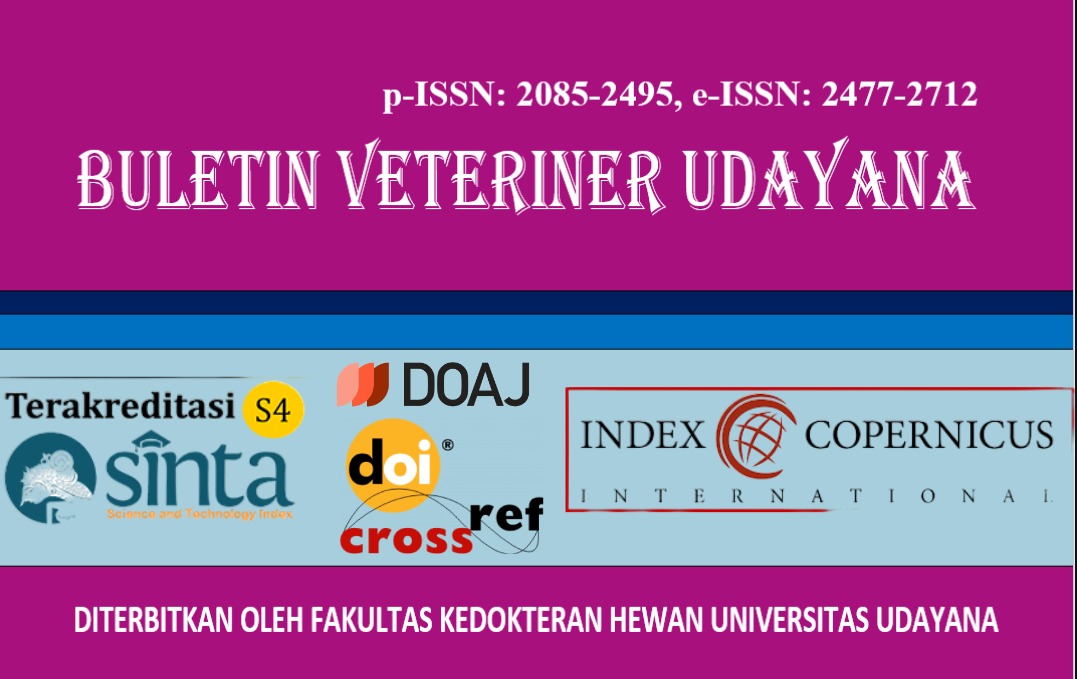HISTOLOGICAL FEATURES OF LYMPHOCYTES, MONOCYTES AND HEMOGLOBIN ONCENTRATIONS IN DOGS WITH MILD AND SEVERE DERMATITIS
DOI:
https://doi.org/10.24843/bulvet.2025.v17.i03.p30Keywords:
dog, dermatitis, lymphocytes, monocytes, necrosis, hemoglobinAbstract
Dogs are susceptible to various dermatological disorders, among which dermatitis is commonly observed. This condition may be caused by fungal infections, ectoparasites, bacterial agents, or metabolic disorders. Dermatitis presents with clinical manifestations ranging from mild to severe, often characterized by widespread skin lesions. The associated inflammatory response may induce alterations in the immune system, particularly affecting agranulocytic leukocytes namely lymphocytes and monocytes or leading to cellular necrosis. Severe dermatitis is frequently accompanied by secondary infections, which may elevate the risk of inflammation-induced anemia and result in changes to hemoglobin (HGB) levels. This study aims to investigate the histological features of necrotic lymphocytes and monocytes, as well as hemoglobin (HGB) levels, in dogs affected by mild and severe dermatitis. Histological examination revealed that necrotic lymphocytes and monocytes exhibited signs of pyknosis, karyorrhexis, and karyolysis. The number of necrotic lymphocytes in dogs with mild dermatitis (10±4.64) was slightly higher than in those with severe dermatitis (8.65±3.38), although the difference was not statistically significant (P˃0.05). In contrast, the number of necrotic monocytes in mild dermatitis cases (19.3±20.8) was significantly greater than in severe cases (3.35±11.62) (P˂0.05). Hemoglobin levels in dogs with mild dermatitis (10.75±4.23) were marginally lower than those in severe cases (11.23±2.9), with no statistically significant difference (P˃0.05).




